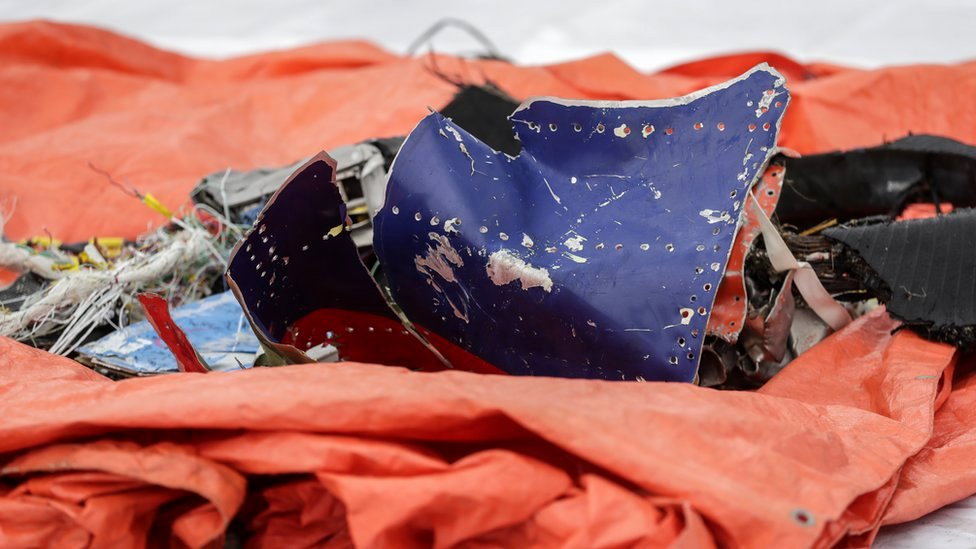737-500 missing in Indonesia
Join Date: May 2006
Location: UK
Posts: 115
Likes: 0
Received 0 Likes
on
0 Posts
Join Date: Jan 2021
Location: Toulouse
Posts: 2
Likes: 0
Received 0 Likes
on
0 Posts
Pitot blocked by wasp mud dauber happened to an Etihad A300 with only a 2 hours stop in BNE on November 21st 2013 (called Mayday).
But indeed it is far too early to make such conclusion for SJ182
I just hope they could recover pitots and inspect them.
A B737 from an operator based in Jakarta lost controlled some years ago (they recovered hopefully) in high altitude, due to incorrect airspeed indication and incorrect procedure applied (PF remaining on side of incorrect speed).
During investigation they found wasp nest in PF side's pitot.
Let's wait the end of the investigation ; I just hope they will consider this possibility ; there is very small awareness within all operators based in JKT as well as for the airport authorities when it comes to dangers caused by the wasps and corrective actions to be taken, especially during the rainy season.
BNE is typical example of what should be done by airport authorities, as preventive measures.
But indeed it is far too early to make such conclusion for SJ182
I just hope they could recover pitots and inspect them.
A B737 from an operator based in Jakarta lost controlled some years ago (they recovered hopefully) in high altitude, due to incorrect airspeed indication and incorrect procedure applied (PF remaining on side of incorrect speed).
During investigation they found wasp nest in PF side's pitot.
Let's wait the end of the investigation ; I just hope they will consider this possibility ; there is very small awareness within all operators based in JKT as well as for the airport authorities when it comes to dangers caused by the wasps and corrective actions to be taken, especially during the rainy season.
BNE is typical example of what should be done by airport authorities, as preventive measures.
Good that they located the recorders in shallow water, so we will find out what happened.
The dauber wasp theory is unlikely as the aircraft was on a 1:30hr turnround prior to the accident flight.
WatchTheSkies
I posted a link earlier to the data I was using (it may have been deleted), but I'll use yours for simplicity.
Your own analysis shows an average track angle rate of approximately +10°/s during the last 11 seconds of flight (from around 8000' until impact).
I agree with that. So I'll ask again - where do you get a "left turn" from ?
I posted a link earlier to the data I was using (it may have been deleted), but I'll use yours for simplicity.
Your own analysis shows an average track angle rate of approximately +10°/s during the last 11 seconds of flight (from around 8000' until impact).
I agree with that. So I'll ask again - where do you get a "left turn" from ?
Join Date: Jan 2008
Location: Netherlands
Age: 46
Posts: 343
Likes: 0
Received 0 Likes
on
0 Posts
Join Date: Apr 2014
Location: Korea
Posts: 126
Likes: 0
Received 0 Likes
on
0 Posts
WatchTheSkies
Drag does not increase exponentially as a function of velocity. Without turbulence the drag is linear in velocity (Stokes' law). At relatively large speed it is quadratic (Rayleigh).
Drag does not increase exponentially as a function of velocity. Without turbulence the drag is linear in velocity (Stokes' law). At relatively large speed it is quadratic (Rayleigh).
Join Date: Mar 2014
Location: Asia
Posts: 5
Likes: 0
Received 0 Likes
on
0 Posts
DaveReidUK
I am assuming the aircraft was inverted from 8000' as that explains the lateral speed increase and the revers from the initial 20s of left turn. So when you are inverted. From the perspective in the cockpit you are turning left when the heading change was +10°
I am assuming the aircraft was inverted from 8000' as that explains the lateral speed increase and the revers from the initial 20s of left turn. So when you are inverted. From the perspective in the cockpit you are turning left when the heading change was +10°
Join Date: Mar 2014
Location: Asia
Posts: 5
Likes: 0
Received 0 Likes
on
0 Posts
Euclideanplane
There are different types of drag. The drag in the case of reverser unlock or severe damage is parasite drag. Refer to
www.skybrary.aero/index.php/Drag
There are different types of drag. The drag in the case of reverser unlock or severe damage is parasite drag. Refer to
www.skybrary.aero/index.php/Drag
Last edited by WatchTheSkies; 10th Jan 2021 at 13:05.
Join Date: Mar 2014
Location: Asia
Posts: 5
Likes: 0
Received 0 Likes
on
0 Posts
DaveReidUK
The first 20 sec of the data is the left turn. I assume the aircraft became inverted as it explains the lateral speed increase and heading direction changes. When the plane is inverted, it was still turning left relative to itself, right if you are viewing the upside down plane from the ground, producing the +10°/s increase in heading
The first 20 sec of the data is the left turn. I assume the aircraft became inverted as it explains the lateral speed increase and heading direction changes. When the plane is inverted, it was still turning left relative to itself, right if you are viewing the upside down plane from the ground, producing the +10°/s increase in heading
Join Date: Mar 2014
Location: UK
Posts: 123
Likes: 0
Received 0 Likes
on
0 Posts
Join Date: Apr 2014
Location: Korea
Posts: 126
Likes: 0
Received 0 Likes
on
0 Posts
WatchTheSkies
That is correct. Parasitic drag refers to an additional volume of air stuck to the body of the aircraft and causing additional drag, e.g. such as with a windmilling or structurally damaged engine. It causes more drag than usual, but the dependence on speed is not different, as it says when quoting the page which you referenced: "Parasitic drag increases with the square of the airspeed". That is quadratic, which is bad enough, but not exponential.
That is correct. Parasitic drag refers to an additional volume of air stuck to the body of the aircraft and causing additional drag, e.g. such as with a windmilling or structurally damaged engine. It causes more drag than usual, but the dependence on speed is not different, as it says when quoting the page which you referenced: "Parasitic drag increases with the square of the airspeed". That is quadratic, which is bad enough, but not exponential.
Join Date: Aug 2000
Posts: 1,501
Likes: 0
Received 0 Likes
on
0 Posts
Possible, but not likely. SOP is probe heat ON after start. As others have said, low CB activity in the area they passed through. Icing at 10000 ft in a CB is possible, but otherwise you need to get higher than 10-11000 ft before you encounter icing in this area. Besides, unreliable airspeed does not lead to a straight down descent.
Something severe happened very fast with this flight. Even if you lose control you will try to do something to regain control. That would show up on the data, but they went down fast without much input to reverse the situation. It feels like a deliberate action or a situation it was not possible to get out of.
Something severe happened very fast with this flight. Even if you lose control you will try to do something to regain control. That would show up on the data, but they went down fast without much input to reverse the situation. It feels like a deliberate action or a situation it was not possible to get out of.
Last edited by ManaAdaSystem; 10th Jan 2021 at 15:31.
Join Date: Jul 2013
Location: Norway
Age: 57
Posts: 140
Likes: 0
Received 0 Likes
on
0 Posts
The first 20 sec of the data is the left turn. I assume the aircraft became inverted as it explains the lateral speed increase and heading direction changes. When the plane is inverted, it was still turning left relative to itself, right if you are viewing the upside down plane from the ground, producing the +10°/s increase in heading
We will soon get the answer when preliminary data from the flight data recorder are released.








